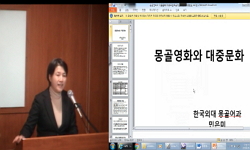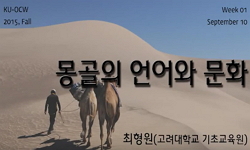The paper re-examined the rise of soju at the end of the Koryo period, which marked a new era in Korean drinking history from the perspective of distillation-technology transfer in Eurasia during the Mongol period. While making use of the sources avai...
http://chineseinput.net/에서 pinyin(병음)방식으로 중국어를 변환할 수 있습니다.
변환된 중국어를 복사하여 사용하시면 됩니다.
- 中文 을 입력하시려면 zhongwen을 입력하시고 space를누르시면됩니다.
- 北京 을 입력하시려면 beijing을 입력하시고 space를 누르시면 됩니다.

燒酒(소주)의 흥기 -몽골 시기 (1206-1368) "중국"에서 한반도에로 증류기술의 전파- = The Rise of Soju: The Transfer of Distillation Technology from “China” to Korea during the Mongol Period (1206-1368)
한글로보기https://www.riss.kr/link?id=A101965673
- 저자
- 발행기관
- 학술지명
- 권호사항
-
발행연도
2016
-
작성언어
Korean
- 주제어
-
등재정보
KCI등재
-
자료형태
학술저널
- 발행기관 URL
-
수록면
69-93(25쪽)
-
KCI 피인용횟수
3
- DOI식별코드
- 제공처
-
0
상세조회 -
0
다운로드
부가정보
다국어 초록 (Multilingual Abstract)
The paper re-examined the rise of soju at the end of the Koryo period, which marked a new era in Korean drinking history from the perspective of distillation-technology transfer in Eurasia during the Mongol period. While making use of the sources available to date, the relative lack of material forces us to rely on reasoning and inference to create the most comprehensive and convincing explanation possible. By comparing it with earlier traditional Korean alcoholic drinks, we have clearly seen how soju was distinctive and new. Yet sources do not clearly say when and how soju spread to and in Koryo at that time. That is why many different theories have competed for preeminence. The paper reviewed earlier theories including those by Chang Chihyon and Yi Songu, and also examined the most recent studies done in different languages and also new archeological findings. We can propose the following provisional conclusion from the current examination. First, distillation developed independently in China. Yet it was the Mongols who adopted distillation technology from other cultures such as China to make distilled alcohols using mare’s milk drink that they enjoyed, and named it arakhi, a foreign word from West Asia that migrated through overland and sea routes, and popularized it in large parts of Eurasia including China and Korea under the Mongol influence in the course of mobilizing goods and people including soldiers and merchants. Merchants from different societies active in the international trades that traveled along the expanded trade routes of the time probably accelerated the transfer processes. The case of Korea, where soju became popular right after the coming of the Mongols, is supported by a good number of documents and historical contexts. That some Mongol soldiers recruited to Korean army camps were possibly from craftsmen families who were able to introduce distillation technology suggests a quite likely scenario. While we cannot deny the possibility that soju was transferred earlier from China to Korea, no evidence supports this so far. Available pieces of evidence all clearly say that distilled alcohol spread widely only after it was transferred from China to Korea during the late Koryo period. The case of soju transfer clearly shows that a big cultural influence could occur through exceptional historical changes. Unlike some foreign alcoholic drinks, which transferred beyond their cultural zone as tribute and then spread very slowly among kings and nobles, soju spread quickly for a short period of time under unprecedented historical conditions, such as “Korea’s close connection to wider parts of Eurasia” through the Mongol empire. It is furthermore intriguing as it involves a transfer of technological knowledge. The story of soju’s rise in Korea is a good example of the rise of a new cultural element based on tradition and innovation, involving both adaptation and localization of new technologies. A further investigation as part of a larger study of the history of distillation on a worldwide basis will help us explore significance of the case of Korean soju in global history.
참고문헌 (Reference)
1 이희수, "이슬람과 한국문화" 청아출판사 2012
2 주영하, "우리 역사 속 미식가 열전: 정도전 스승 이색의 소주 사랑"
3 배경화, "안동소주의 전래과정에 관한 문헌적 고찰" 안동대학교 대학원 2000
4 미야자키 마사카쓰, "술의 세계사" 고려대학교 2014
5 김호동, "몽골제국 기행: 마르코 폴로의 선구자들" 까치 2015
6 이강한, "고려와 원제국의 교역의 역사" 창비 2013
7 金宗瑞, "高麗史節要" 서울아세아문화사 1972
8 鄭麟趾, "高麗史" 서울아세아문화사 1983
9 李盛雨, "韓國食品社會史" 敎文社 1984
10 張智鉉, "韓國外來酒流入史硏究" 修學社 1989
1 이희수, "이슬람과 한국문화" 청아출판사 2012
2 주영하, "우리 역사 속 미식가 열전: 정도전 스승 이색의 소주 사랑"
3 배경화, "안동소주의 전래과정에 관한 문헌적 고찰" 안동대학교 대학원 2000
4 미야자키 마사카쓰, "술의 세계사" 고려대학교 2014
5 김호동, "몽골제국 기행: 마르코 폴로의 선구자들" 까치 2015
6 이강한, "고려와 원제국의 교역의 역사" 창비 2013
7 金宗瑞, "高麗史節要" 서울아세아문화사 1972
8 鄭麟趾, "高麗史" 서울아세아문화사 1983
9 李盛雨, "韓國食品社會史" 敎文社 1984
10 張智鉉, "韓國外來酒流入史硏究" 修學社 1989
11 李德懋, "靑莊館全書" 솔 1997
12 李晬光, "芝峰類説(1614)" 景仁文化社 1970
13 成海應, "硏經齋全集: 外集 卷60" 한국고전번역원
14 小泉武夫, "焼酎の伝播の検証と、その後に於ける焼酎の技術的発展" 54 (54): 219-229, 2010
15 王啓興, "校編全唐詩" 湖北人民出版社 2001
16 W, "村上医家史料館蔵の薬箱及びランビキについて" 中津市教育委員会 2007
17 徐兢, "宣和奉使高麗圖經(1124)" 황소자리 2005
18 李圭景, "五洲衍文長箋散稿" 동국문화사
19 劉廣定, "中國科學史論集" 國立臺灣大學出版中心 2002
20 馮恩學, "中國燒酒起源新探" 55 (55): 163-170, 2015
21 Buell, Paul David, "Yinshan Zhengyao" Brill 2010
22 Laufer, Berthold, "Sino-Iranica: Chinese Contribution to the History of Civilization in Ancient Iran" Field Museum of Natural History 1919
23 Forbes, R. J., "Short History of Distillation" E. J. Brill 1970
24 Huang, Hsing-tsung, "Science and Civilization in China, vol. 6: Biology and Biological Technology, part 5: Fermentation and Food Science" Cambridge University Press 2000
25 Buell, Paul D., "Mongol Empire and Distillation: Technology and Popularization" 2015
26 Pettid, Michael J, "Korean Cuisine: An Illustrated History" Reaktion Books 2008
27 Allchin, Frank R., "India: the ancient home of distillation?" 14 (14): 55-63, 1979
28 Valenzuela-Zapata, "Huichol’ Stills: A Century of Anthropology: Technology Transfer and Innovation" 8 : 157-191, 2013
29 Bayarsaikhan, Dashdondog, "Drinking Traits and Culture of the Imperial Mongols in the Eyes of Observers and in a Multicultural Context" 2016
30 Buell, Paul D., "Distilling of the Volga Kalmucks and Mongols: Two Accounts from the 18th Century by Peter Pallas with some Modern Comparisons" 2016
31 Luo, Feng, "Chinese Scholars on Inner Asia, edited by Xin Luo and Roger Covey" Indiana University, Sinor Research Institute for Inner Asian Studies 487-518, 2012
32 고려대학교 민족문화연구원 국어사전편찬실, "(고려대)한국어대사전" 고려대학교 민족문화연구원 2009
동일학술지(권/호) 다른 논문
-
- 중앙아시아학회
- 김병준
- 2016
- KCI등재
-
遊牧(유목),騎馬民族(기마민족) 靴(화)의 구조적 특성과 유형 연구
- 중앙아시아학회
- 윤양노 ( Yang No Yoon )
- 2016
- KCI등재
-
1930-40년대 한국 초창기 돈황학 연구 -김구경, 한낙연, 이상백을 중심으로-
- 중앙아시아학회
- 정광훈
- 2016
- KCI등재
-
- 중앙아시아학회
- 김지오 ( Ji Oh Kim )
- 2016
- KCI등재
분석정보
인용정보 인용지수 설명보기
학술지 이력
| 연월일 | 이력구분 | 이력상세 | 등재구분 |
|---|---|---|---|
| 2028 | 평가예정 | 재인증평가 신청대상 (재인증) | |
| 2022-01-01 | 평가 | 등재학술지 유지 (재인증) |  |
| 2019-01-01 | 평가 | 등재학술지 유지 (계속평가) |  |
| 2016-01-01 | 평가 | 등재학술지 선정 (계속평가) |  |
| 2015-12-01 | 평가 | 등재후보로 하락 (기타) |  |
| 2011-01-01 | 평가 | 등재 1차 FAIL (등재유지) |  |
| 2009-01-01 | 평가 | 등재학술지 유지 (등재유지) |  |
| 2006-01-01 | 평가 | 등재학술지 선정 (등재후보2차) |  |
| 2005-01-01 | 평가 | 등재후보 1차 PASS (등재후보1차) |  |
| 2003-07-01 | 평가 | 등재후보학술지 선정 (신규평가) |  |
학술지 인용정보
| 기준연도 | WOS-KCI 통합IF(2년) | KCIF(2년) | KCIF(3년) |
|---|---|---|---|
| 2016 | 0.62 | 0.62 | 0.67 |
| KCIF(4년) | KCIF(5년) | 중심성지수(3년) | 즉시성지수 |
| 0.63 | 0.55 | 0.793 | 0.08 |





 KCI
KCI KISS
KISS






